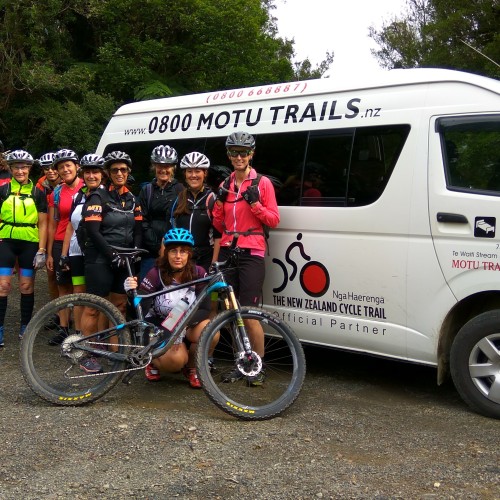The Pakihi Track is a stunning 20 km journey through lush Eastland forest.
The Pakihi Track was first formed around 1905. Early settlers hoped it would become the first road to connect Motu and Opotiki, which never happened, but the Pakihi has long been popular with trampers and hunters.
From about 1990 it earned a reputation as an epic mountain bike ride. 25 bridges were installed in a huge restoration project in 2010-12. The Pakihi is now a well-formed, shared-use trail that attracts about 3,000 users per year.
For safety, cyclists can only ride from the Motu Road junction to Pakihi Road end, not the other way. Walkers/runners can go both ways. All users must be prepared to stop to let others past. There is no mobile phone coverage, so a personal locator beacon is advised.
It is well-formed but, in places, it is narrow with steep drop-offs to the side. Often, there are small rock falls and rock debris – this is a backcountry track in challenging terrain.
This track is very prone to slips and washouts, especially after periods of heavy rain. Check Motu Trails for the latest track reports, especially after heavy rain.
There are sections of the track where you will need to dismount and either walk or carry your bike. Take extreme caution at the following locations:
GR 950 655 - Approx 900-m from Motu Rd track entry point
GR 934 656 – Between 4-km and 5-km markers
GR 914 655 – Approx 300-m above Pakihi Hut
GR 914 660 – Approx 200-m below Pakihi Hut
GR 901 679 – Between Bridges 18 and 19
Motu Road to Pakihi Hut (10 km)
For cyclists, the start of the Pakihi Track is from the Motu Road, at close to 600 m altitude. There is a small shelter and a car-parking area. The top half of the track is a steady descent, dropping over 400 m to the Pakihi Hut.
From the Motu Road to the hut, you cross 12 wooden bridges. It is thickly forested with trees including tawa, tōtara, rimu and rewarewa, however there are regular glimpses of far ridges. About 5 km in there are several 1.5 m wide cuttings across ridgetops. It’s impressive to think that these would have been dug by hand, over a century ago.
There are two side-tracks down to the Pakihi Hut and the stream. They’re close together and clearly signed.
Pakihi Hut
- Category: Standard
- Facilities: 6 bunk beds, heating, mattresses, toilets - non-flush, water from tap - not treated, boil before use
- Bookings not required - first come, first served
Pakihi Hut to Pakihi road end (9 km)
Beyond the Pakihi Hut, the next few km are the most technical for riding, and the most liable to rock falls. Take care. A km after the hut you reach the Pakihi stream suspension bridge, a spectacular 32-m structure that spans a pretty gorge. On both banks, look for the remains of the abutments of the original bridge, built 1913/14 and wrecked in a massive storm in 1918.
The lower half of the track is stunning, following the Pakihi stream all the way. You may see wild trout and birds including New Zealand falcon/kārearea, North Island robin, New Zealand woodpigeon/kererū, and North Island weka. There are numerous small waterways, many falling in waterfalls. In the rain, the music and thunder of water are everywhere.
At the end of the track, there is a shelter, car park, and toilet. Over the stream, Weka Wilds offers accommodation. Not far away in the Te Waiti Valley, there’s the Boulders Campsite. If you’re arranging to be picked up, it’s 23 km and a 30-minute drive from here to Ōpōtiki.
More information
The Track is part of Motu Trails and The New Zealand Cycle Trail.
Getting there
Hunters, walkers and trail runners often start from the Pakihi road end, going up and back. A popular walk is from the Pakihi road to the Motu Road junction, then turn around and head to Pakihi Hut for the night. This gives you a day of 30 km, with a 10 km walk out on the second day.
To drop cyclists off to ride the Pakihi: From Opotiki, it’s most common to drive up the Waioeka Gorge SH2 and turn off at Matawai. Drive to the top of the hill above Motu, almost 800 m altitudes. This is the shuttle drop-off point. From here, it’s a 9 km ride down the Motu Road to the top of the Pakihi.
Source: Department of Conservation





